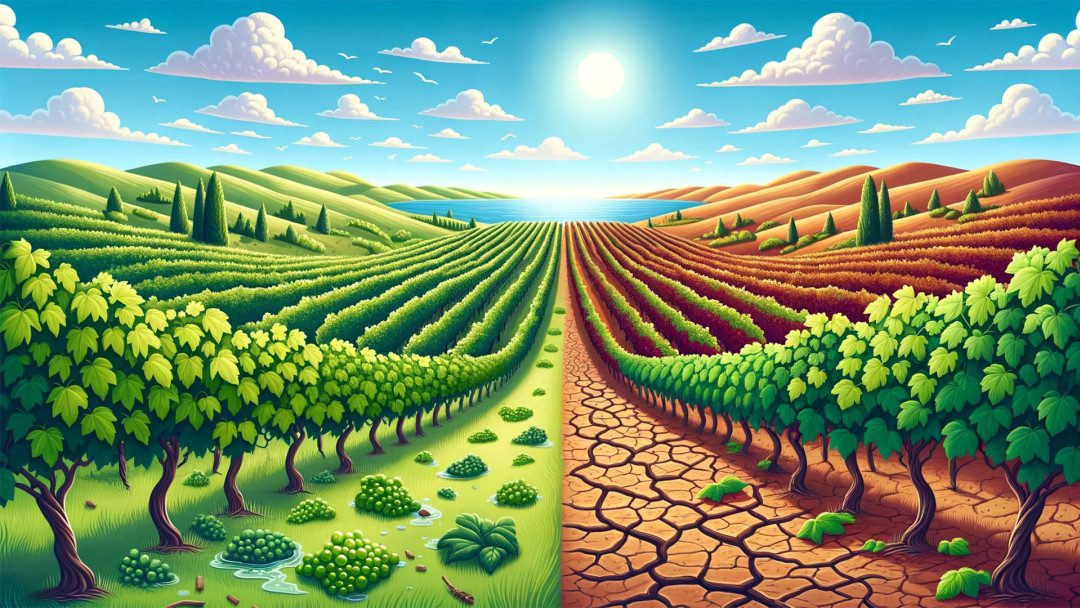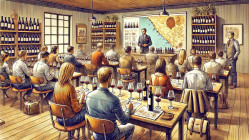
The Influence of Climate Change on Fine Wine Assets
The global wine market, steeped in tradition and shaped by centuries of craftsmanship, is at a pivotal juncture today. Climate change, a looming spectre of the 21st century, is altering the very fabric of viticulture. The implications stretch beyond the vineyard, influencing economic models, investment strategies, and even the palates of wine enthusiasts.
The Science Behind Climate Change and Viticulture
Terroir – the magical amalgamation of soil, climate, and human touch – is the bedrock of wine's unique character. Central to terroir is climate. Grapes, being highly sensitive, react palpably to temperature shifts. For instance, a study from the University of California, Davis, found that even a 1°C rise in temperature can accelerate harvest times by six days.
Moreover, increased temperatures can lead to higher sugar content in grapes, translating to wines with elevated alcohol levels. On the flip side, erratic rainfall patterns can disrupt the balance of acid and sugar in grapes, impacting the wine's flavour and ageing potential.
Historical Perspective
Regions like Bordeaux, known for its robust Cabernet Sauvignons, and Burgundy, celebrated for its nuanced Pinot Noirs, have long been the gold standard in wine investment. However, data over the past few decades reveals unsettling trends. Bordeaux, for instance, has seen its average temperatures rise by 1.5°C since the 1950s. This has led to earlier harvests, sometimes by two weeks or more.
While earlier harvests aren't inherently negative, they come with challenges. For one, grapes might ripen during hotter parts of the summer, potentially leading to overripe flavours. Additionally, altered harvest times can conflict with age-old viticultural practices, demanding adaptation.
Emerging Wine Regions Due to Climate Shifts
Change, while challenging, can also herald opportunity. As iconic wine regions face climatic challenges, newer regions are coming to the fore. Consider England – once deemed too cold for consistent viticulture. Today, English sparkling wines are winning accolades and drawing comparisons to Champagne.
Similarly, once on the fringes of the Australian wine scene, Tasmania is experiencing a renaissance. Compared to mainland Australia, its cooler climate makes it ideal for producing elegant Pinot Noirs and Chardonnays. For investors, these regions present untapped potential. Early investments in emergent wine regions can offer significant returns as their global reputation solidifies.

Adaptations and Innovations in the Wine Industry
With its roots deep in history, the wine industry is showing remarkable agility in the face of climate change. One notable adaptation is the exploration of alternative grape varieties. In Bordeaux, experiments with grapes like Alvarinho and Liliorila are underway, as they might be better suited to future climates.
Vineyard management is also transforming. Techniques like deficit irrigation, where water is restricted to vines to improve grape quality, are gaining traction. There's also a focus on canopy management to shield grapes from excessive sunlight, preventing sunburn and preserving acidity.
Technology, too, is playing its part. From drones monitoring vineyard health to AI predicting optimal harvest times, the fusion of tech and tradition is paving the way forward.
Implications for Wine Investors
For wine investors, understanding the evolving dynamics of the industry is paramount. Traditional regions, while still valuable, might pose increased risks. For instance, a prized Bordeaux vintage from a particularly hot year might not age as gracefully as expected, potentially impacting its long-term value. Referring to resources like a Bordeaux vintage chart can help investors make more informed decisions by comparing the best Bordeaux vintage years and assessing their ageing potential.
However, as with all investments, diversification is key. By spreading investments across traditional and emerging regions, investors can hedge against climatic uncertainties. Moreover, with winemakers innovating rapidly, there's potential to invest in wineries at the forefront of adaptation, positioning one's portfolio for future success.
Conclusion
The wine industry, like many sectors, stands at a crossroads. The challenges posed by climate change are undeniable, reshaping landscapes, practices, and even the very essence of some wines. However, with challenge comes innovation. As the industry adapts, so too must investors. By staying informed, embracing change, and diversifying portfolios, the legacy of fine wine can be safeguarded for future generations.
Related Content
Interested in learning more about wine trends, wine investment, or the wine industry in general? Check out our related content below for more insights and advice.
Remember, Cult Wines is more than just a source of wine knowledge. We're a gateway to smart wine investment, helping you turn your passion for wine into a potential source of financial growth. Whether you're a seasoned investor or a novice, we're here to guide you on this exciting journey.



